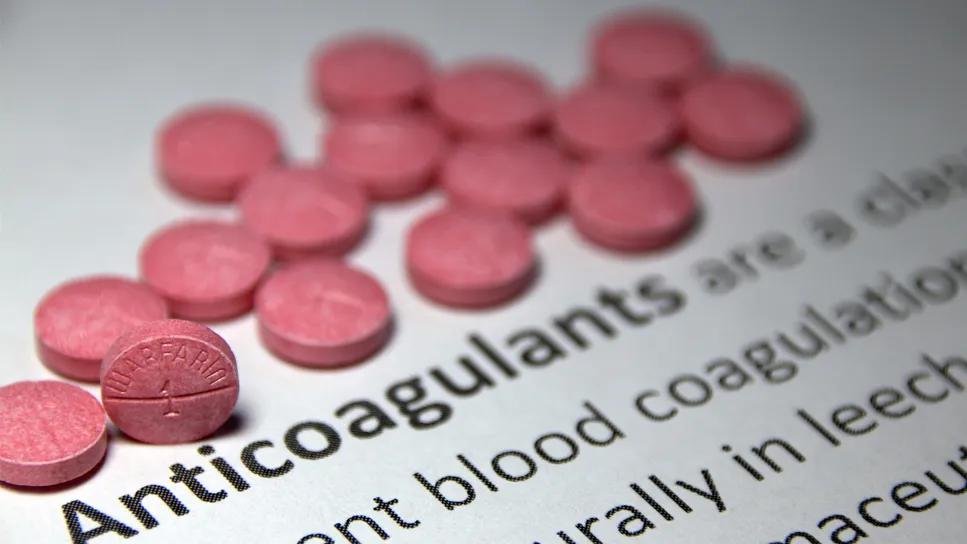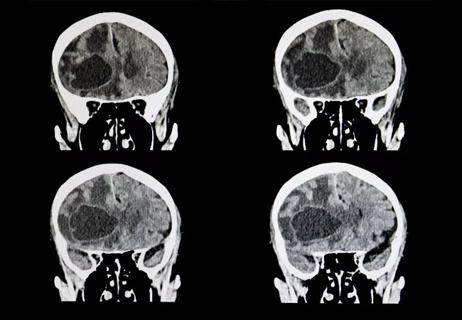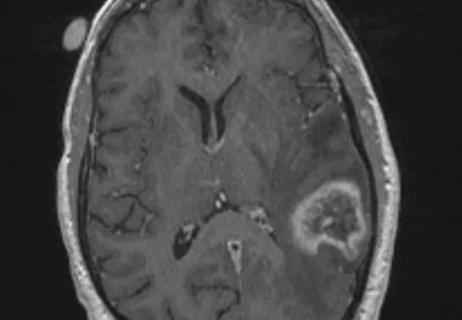Largest study to date comparing direct-acting oral anticoagulants to low-molecular-weight heparin

Direct-acting oral anticoagulants (DOACs) appear safe and well-tolerated in people with brain metastases who require therapeutic anticoagulation for cancer-associated thromboembolism (CAT), according to new research presented at the 2025 ASCO annual meeting.
Advertisement
Cleveland Clinic is a non-profit academic medical center. Advertising on our site helps support our mission. We do not endorse non-Cleveland Clinic products or services. Policy
Cancer thrombosis is a major cause of death in cancer patients, second only to the cancer itself. Over the last decade or so, its treatment has shifted away from injected low-molecular-weight heparin (LMWH) – typically once- or twice-daily enoxaparin - towards using DOACs, which are easier to take and appear to better reduce the risk for recurrent thrombosis. But there has been some concern that certain patients might have a higher risk of bleeding with DOACs compared to LMWH.
“Cancer patients with brain metastases are one population where we don’t have a lot of prospective data to look at DOACs versus enoxaparin. We do know that having brain metastases increases the risk of intracranial bleeding while on an anticoagulant,” says lead investigator Dana E. Angelini, MD, co-director of Cleveland Clinic’s CAT clinic.
The new study of more than 8,000 patients showed that DOACs were associated with a significantly lower risk for intracranial hemorrhage than LMWH, as well as lower rates of intensive care unit (ICU) admission and all-cause mortality.
“Our study was reassuring, and it aligns with other smaller studies that have shown a lower risk of bleeding with DOACs compared to LMWH in patients with brain metastases. Taken together, our findings support the current treatment plan of using DOACs, even in the setting of brain metastases,” says Dr. Angelini, who is also Assistant Professor of Medicine at Cleveland Clinic’s Lerner College of Medicine.
The new data come from the multi-institutional TriNetX data platform, so they are retrospective but large in number. Propensity score matching was used to minimize confounding.
Advertisement
All of the study patients had developed CAT within six months of brain metastasis diagnosis, and had received therapeutic doses of either DOACs (apixaban, rivaroxaban or edoxaban) or LMWH (injected enoxaparin). After 1:1 propensity score matching for over 50 covariates, including age, sex, and cancer type, there were 4,275 patients in each treatment group.
Those who had received DOACs had significantly lower rates of intracranial hemorrhage (hazard ratio 0.855, p=0.049), ICU admission (16.7% vs. 20.3%, p <0.001) and all-cause mortality at one year (42.4% vs. 48.9%, p < 0.001).
In subgroup analyses, DOACs were associated with lower intracranial hemorrhage rates for those with primary lung cancer, melanoma and renal cell carcinoma, but the differences weren’t statistically significant. There were no differences for breast or colorectal cancer. “Again, that’s overall favorable for the use of DOACs,” Dr. Angelini notes.
Still, a future prospective study would be helpful to correct for any kind of bias, Dr. Angelini adds.
Dr. Angelini is now principal investigator for a phase 3 multicenter prospective clinical trial (NCT05171049) comparing the anticoagulant effects of the DOAC apixaban to a novel investigational once-monthly injectable anticoagulant called abelacimab, a selective human monoclonal antibody that specifically inhibits factor XI and is thereby less likely to cause bleeding than traditional blood thinners. This has been demonstrated in previous studies in total knee replacement and in atrial fibrillation. Results of the new study are expected in 2027.
Advertisement
“Current DOACs studied in cancer thrombosis all work in the same way, whereas abelacimab works in a different way to prevent clots, and we anticipate lower bleeding. There are several investigational agents now that target different parts of the coagulation cascade to reduce the risk of bleeding yet still inhibit clot formation. We will always welcome better treatments that are safer and effective,” Dr. Angelini says.
Advertisement
Advertisement

Research demonstrates improved overall survival for patients receiving comprehensive treatment for breast cancer in addition to radiation or surgical intervention for brain cancer

Improvements enable targeting of brain tumors with single-session, fractionated or neoadjuvant approaches

This approach led to local control for patients with brain metastases more than 2 cm in diameter

We now have an expanded toolbox to extend survival and lessen treatment toxicity

New review published in Cancers suggests a synergistic benefit

Patient with quadruple refractory multiple myeloma achieves complete response with cell therapy

Distinct baseline immune profiles can predict response and resistance to different types of CAR-T cells.

National Blood Clot Alliance collaborates with faith-based organizations on first-of-its-kind church bus tour